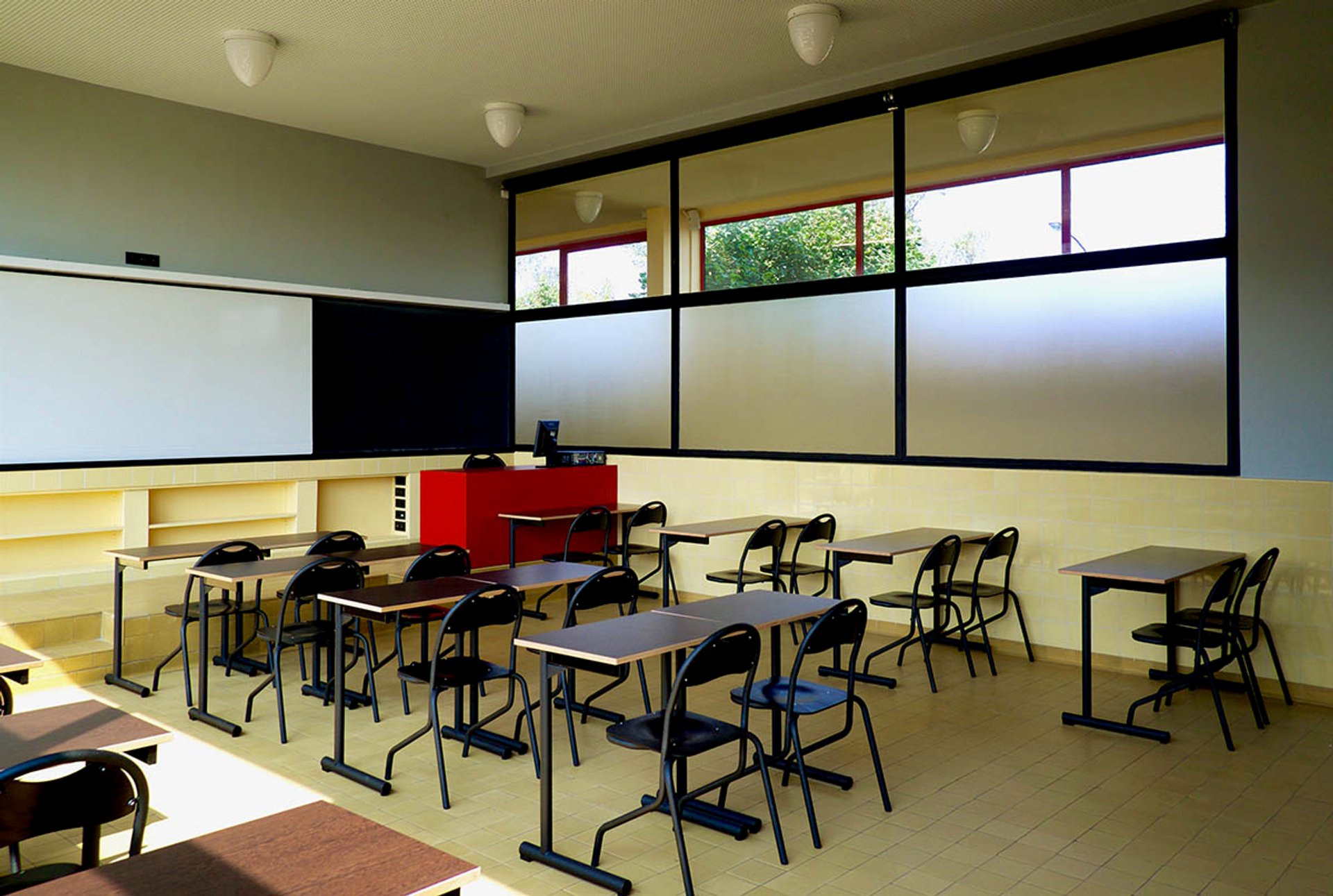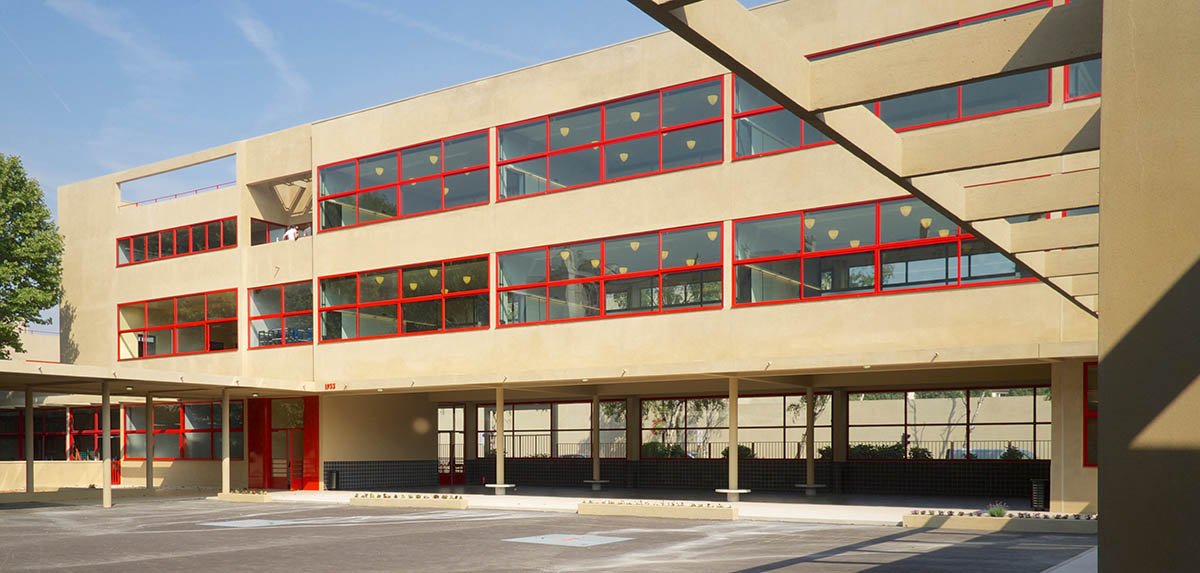The World Monuments Fund announced today (7 November) that it has awarded the 2018 WMF/Knoll Modernism Prize to a French architectural firm for the preservation of the 1933 Karl Marx School in the Paris suburb of Villejuif.
The building, designed and constructed in concrete by André Lurçat according to Modern functionalist principles, underwent a three-year restoration process overseen by the firm Agence Christiane Schmuckle-Mollard to repair exterior wall cracks, conserve interior ceramic sandstone tiles and reseal the windows, the organisation said. A new wing was also built to meet the needs of the school.
A prime example of the open-air schools favored by social reformers in the 1930s, the structure is known for its relative transparency, massive volumes of space and natural lighting. Continuously occupied by students but inadequately maintained over the years, it had fallen into severe disrepair by the 1990s, the World Monuments Fund said. In 1996 it was listed as a national historical monument, which protected it from demolition and freed up resources for its restoration.
A special mention was also awarded by the prize jury to Harboe Architects for the preservation of Frank Lloyd Wright’s 1908 concrete Unity Temple in Oak Park, Illinois, which underwent exterior repairs, the installation of new roof systems and the restoration of interior details like art glass windows and light fixtures.
The chairman of the prize jury, Barry Bergdoll, a professor of art history at Columbia University and the former chief curator of architecture and design at the Museum of Modern Art, said that the Karl Marx School preservation project had brought back the “spatial richness” of the building by restoring its original color scheme and reknitting its interior and exterior spaces into an interconnected whole. “Later changes had obscured some of those connections between the community school and the street,” he said in an interview. Today, “one of the features is that you can see through the school playground right through the transparency of the ground floor and out onto the street.” A school mural was also restored, he added.
Bergdoll said the school building had the “defining characteristics of the heroic moment in Modern architecture”—planar abstraction, the “absolute abolition of ornament except for the use of color”, vibrant red metal sash windows, great planes of glass and a flat roof.
At the same time, he emphasised, the prize committee members “had to remind ourselves that we weren’t giving the award to the original building or the original design”, but rather celebrating the way the preservation architect surmounted the difficulty of the restoration challenges. “One thing that’s really important about this building is that it’s still functioning as a school and that the restoration found the right balance between restoring the historic fabric and also making it a living piece of architecture,” he said.
Lurçat is little known today except to scholars of French Modernism, but in the 1920s and 30s he was viewed as part of a trio of celebrated architects with Le Corbusier and Robert Mallet-Stevens, Bergdoll said. Among his better-known buildings are the Villa Seurat, a cluster of houses and artists’ studios in southern Paris, and nearby Villa Guggenbühl, which bears close stylistic connections to the Karl Marx School and to Le Corbusier’s oeuvre, Bergdoll said.
As a leftist, Lurçat would have been highly receptive to the school commission, he said. Villejuif was a left-wing, historically Communist suburb, Bergdoll noted, and the school would have been seen in the 1930s as a highly hygienic “factory for learning” for students in a less privileged area, with the municipality as benefactor. “It very much evokes a kind of civic Communism, an egalitarianism of Modern architecture,” he said.
The biennial prize honours architects or designers who have come up with innovative ways to save Modernist buildings. This year there were 30 nominees, the World Monuments Fund said. The prize will be presented on 4 December in a ceremony at the Museum of Modern Art.

A classroom in the Karl Marx School Courtesy of World Monuments Fund



